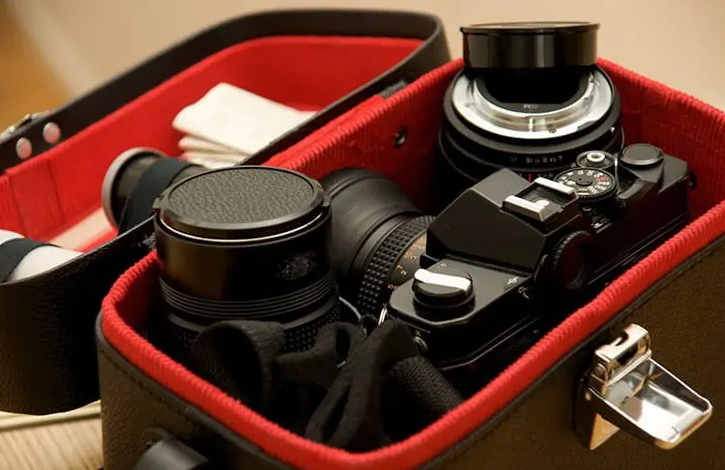Yes, hard shell cases offer a high level of protection against impact, weather, and scratches, making them a reliable choice for safeguarding valuables.
Table of Contents
Types of Hard Shell Cases
For Electronics
Hard shell cases for electronics primarily focus on safeguarding gadgets like laptops, cameras, drones, and smartphones. These cases often feature foam or padded inserts that contour to the shape of the device for maximum security.
- Laptops: These cases ensure your laptop stays safe from falls, spills, and environmental factors. They usually come with specific compartments for chargers and accessories.
- Cameras: A hard shell case for cameras can have custom slots for lenses, batteries, and other accessories. These are particularly important for photographers on the go.
- Drones: These cases have specially designed slots to fit drone bodies, propellers, and remotes.
- Smartphones: Though less common, some people opt for hard shell cases for extra smartphone protection, especially during extreme outdoor activities.

For Instruments
When it comes to musical instruments, a hard shell case offers robust protection against accidental drops, climate changes, and physical shocks.
- Guitars: These cases often have velvet or plush lining to protect the instrument’s finish.
- Brass Instruments: Cases for trumpets or trombones come with compartments for mutes and mouthpieces.
- Keyboards: Generally wheeled for easy transport, these cases offer foam padding to accommodate various keyboard sizes.
For Tools and Equipment
Tradespeople and technicians often use hard shell cases to store and transport their tools. Durability is key here, as the tools often weigh quite a bit and require a sturdy, secure environment.
- Hand Tools: Wrenches, screwdrivers, and hammers fit well in these cases.
- Power Tools: Saws, drills, and grinders need extra space and additional compartments for accessories.
- Measuring Equipment: Items like laser levels and multimeters often come with specialized slots in these cases.
For Travel Luggage
Hard shell luggage is becoming increasingly popular for travelers due to its durability and ease of transport.
- Carry-Ons: These suitcases fit overhead compartments and provide excellent protection against the rough handling often seen in air travel.
- Check-in Luggage: Larger options exist for those who need more space and are not concerned about weight restrictions.
Materials Used in Hard Shell Cases
Polycarbonate
Polycarbonate is a type of thermoplastic polymer that offers a unique combination of strength, durability, and flexibility. This material is commonly used in hard shell cases designed for electronics and travel luggage. Its lightweight nature makes it easy to carry, while its high impact resistance protects your gadgets or belongings effectively. Cases made from polycarbonate usually offer excellent protection against harsh weather conditions, including both high and low temperatures. If you’re interested in learning more about polycarbonate, you can check its Wikipedia page.
Key Features:
- High Impact Resistance
- Lightweight
- Weather Resistant
Aluminum
Aluminum is a robust and lightweight metal that offers superior protection and durability. Many professionals prefer aluminum hard shell cases, especially for transporting musical instruments or specialized equipment. While not as lightweight as polycarbonate, aluminum cases are often considered to be more rugged and able to withstand greater physical abuse. Aluminum also has a sleek aesthetic appeal, often finished with a brushed or anodized surface for additional protection against scratches. More about aluminum can be found on its Wikipedia page.
Key Features:
- High Durability
- Scratch-resistant
- Sleek Aesthetic
ABS Plastic
ABS (Acrylonitrile Butadiene Styrene) Plastic is another common material used in the manufacturing of hard shell cases. While not as durable as aluminum or polycarbonate, ABS plastic is still a solid choice for budget-friendly options. ABS plastic cases are often used for tools and equipment, offering a satisfactory level of protection against physical impacts and a moderate level of weather resistance. ABS is less likely to crack under stress compared to other plastics and is commonly used in combination with other materials like polycarbonate to offer a balanced level of protection and affordability. Check out the Wikipedia page for ABS plastic to learn more.
Key Features:
- Budget-friendly
- Moderate Impact Resistance
- Versatility
Mechanics of Protection
Impact Resistance
Impact resistance is one of the primary features people look for in a hard shell case. Whether you’re transporting a musical instrument or carrying expensive electronic equipment, impact resistance ensures that your items survive accidental drops, bumps, or collisions. Materials like polycarbonate and aluminum are popular choices for high-impact resistance. Inside the case, padded or foam inserts can absorb shocks, adding an extra layer of protection.
Key Features:
- Absorbs Shocks
- Protects Against Drops and Collisions
- Reinforced Corners for Additional Strength
Weather Resistance
Weather resistance protects your belongings from environmental elements like rain, snow, and extreme temperatures. For example, cases designed for outdoor activities often have water-resistant or waterproof seals. This ensures that your items remain dry and functional even when exposed to moisture. Some cases even offer UV resistance to protect against sun damage, which is especially useful for sensitive equipment like cameras. To understand the science behind weather resistance, you might find the Wikipedia page on waterproofing interesting.
Key Features:
- Water-Resistant Seals
- UV Resistance
- Insulated Interiors for Temperature Control
Scratch Resistance
Scratch resistance is essential for maintaining the aesthetic quality of both your case and the items inside it. High-quality hard shell cases often have an outer layer or coating that minimizes the risk of scratches. This is particularly beneficial for people who frequently travel or are constantly on the go. Musical instruments with delicate finishes and electronics with screens can benefit immensely from scratch-resistant cases. For a deeper dive into scratch-resistant materials, you can visit the Wikipedia page on the Mohs scale of mineral hardness.
Key Features:
- Protective Coating
- Resilient Material Choices
- Soft Interior Linings to Prevent Internal Scratches
Comparing Hard Shell to Soft Shell Cases
Durability
When it comes to durability, hard shell cases often come out on top. Made from robust materials like polycarbonate, aluminum, and ABS plastic, these cases are designed to withstand heavy impact and rough handling. Soft shell cases, typically made from fabrics like nylon or polyester, don’t offer the same level of protection against drops or impacts. However, they can be more resilient against minor scratches and scuffs.
Key Features:
- Hard Shell: High Impact Resistance, Robust Material Choices
- Soft Shell: Resilient against Minor Scratches, Less Protection against Impact

Weight
Weight is an important consideration, especially for travelers and professionals who are always on the move. Hard shell cases, despite their durable nature, can be surprisingly lightweight, thanks to advanced materials like polycarbonate. On the other hand, soft shell cases are usually lighter due to their fabric construction but might require extra padding to offer adequate protection, which can add to the weight.
Key Features:
- Hard Shell: Lightweight but Sturdy
- Soft Shell: Naturally Lighter but Might Require Extra Padding
Versatility
Soft shell cases generally offer more versatility in terms of storage options. They often feature multiple pockets and compartments that can be expanded, making them ideal for people who require easy access to a variety of items. Hard shell cases usually have a fixed storage layout, with custom foam inserts or compartments designed for specific types of equipment or belongings. However, their rigidity makes them a better option for protecting fragile or expensive items.
Key Features:
- Hard Shell: Fixed Storage Layout, Better for Fragile Items
- Soft Shell: Expandable Compartments, Easier Access to Items
Industry Standards and Certifications
MIL-STD
MIL-STD or Military Standards are a set of U.S. Department of Defense criteria that products must meet to ensure they can withstand harsh conditions. These standards are not exclusive to military applications; many commercial products also aim to meet MIL-STD for durability and reliability. When you see a hard shell case with MIL-STD certification, you can be confident that it will offer high-level protection against extreme conditions like strong impacts, high pressure, and severe temperatures. To delve deeper into MIL-STD standards, check the Wikipedia page on the topic.
Key Features:
- High-Level Impact Resistance
- Temperature Extremes Tolerance
- High-Pressure Resistance
IP Rating
The IP (Ingress Protection) Rating is an international standard that specifies the degree to which a product is protected against intrusion by substances like dust and water. For example, an IP67 rating would mean that the case is dust-tight and can withstand being submerged in up to 1 meter of water for up to 30 minutes. This certification is particularly valuable for hard shell cases used in outdoor or industrial settings. To understand more about IP ratings, visit the Wikipedia page on IP Code.
Key Features:
- Dust Protection
- Water Resistance or Waterproofing
- Level of Solid Object Protection
Drop Test
Drop tests are practical examinations where a case containing either a test item or the actual equipment is dropped from a certain height to assess its impact resistance. This standard is more straightforward but extremely relevant for consumers who are looking for a case to protect against accidental drops and collisions. While there isn’t a universal standard for drop tests, many manufacturers specify the heights and conditions under which their cases have been tested. More insights into the mechanics of impact and drop tests can be gleaned from Wikipedia’s article on Impact testing.
Key Features:
- Measures Impact Resistance
- Specifies Height and Conditions of Tests
- Practical Real-World Relevance






